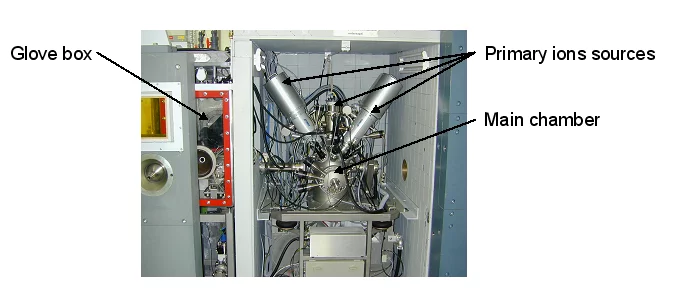The ATOMIKA 4000 shielded SIMS has been installed in 1995 in PSI. It is specifically designed for the analysis of high irradiated samples, both fuel (UO2;, MOX…) and cladding materials (Zircaloy-2, M5…). The maximum authorized activity in the analysis chamber is of 1×101010 Bq 60Co equivalent.
Three primary ion sources are usable, depending on the type of investigation: 133Cs+ and (16O2)+ for in depth investigation (depth profile) and 69Ga+ for surface investigation (ion mapping). Main characteristics for the different primary ions beam:
Energy (keV) | Beam diameter (µm) | Intensity range (nA) | |
|---|---|---|---|
69Ga+ | 25 | 0.3 | 0.01 - 5 |
(16O2)+ | 12 | 15 | 5 - 1500 |
133Cs+ | 10 | 15 | 5 - 1000 |
The noticed beam diameters correspond to the lowest beam intensity (beam current).
PSI is a world leader in the application of the SIMS technique on radioactive samples:
- Li and B quantification in the outer oxide layer of irradiated cladding (performed using implanted reference materials).
- Analysis of irradiated fuel: distribution of fission products and minor actinides isotopes along a pellet diameter (Pu isotopes, U isotopes, O, Cs, I…).
- Fission gases (Xe and Kr) investigation: distribution of bubbles along the pellet diameter.
- 18O diffusion profile through the first 10 µm of material (Solid Oxide Fuel Cells).
The instrument has been up-graded at the beginning of 2012. The data acquisition system has been completely renewed. The limit of detection of most species is in general few ppm but is strongly depending on the nature of the investigated material. As an example, the limit of detection of 7Li in ZrO2 is about 0.5 ppm. For 11B in ZrO2 it is 10 ppm.

